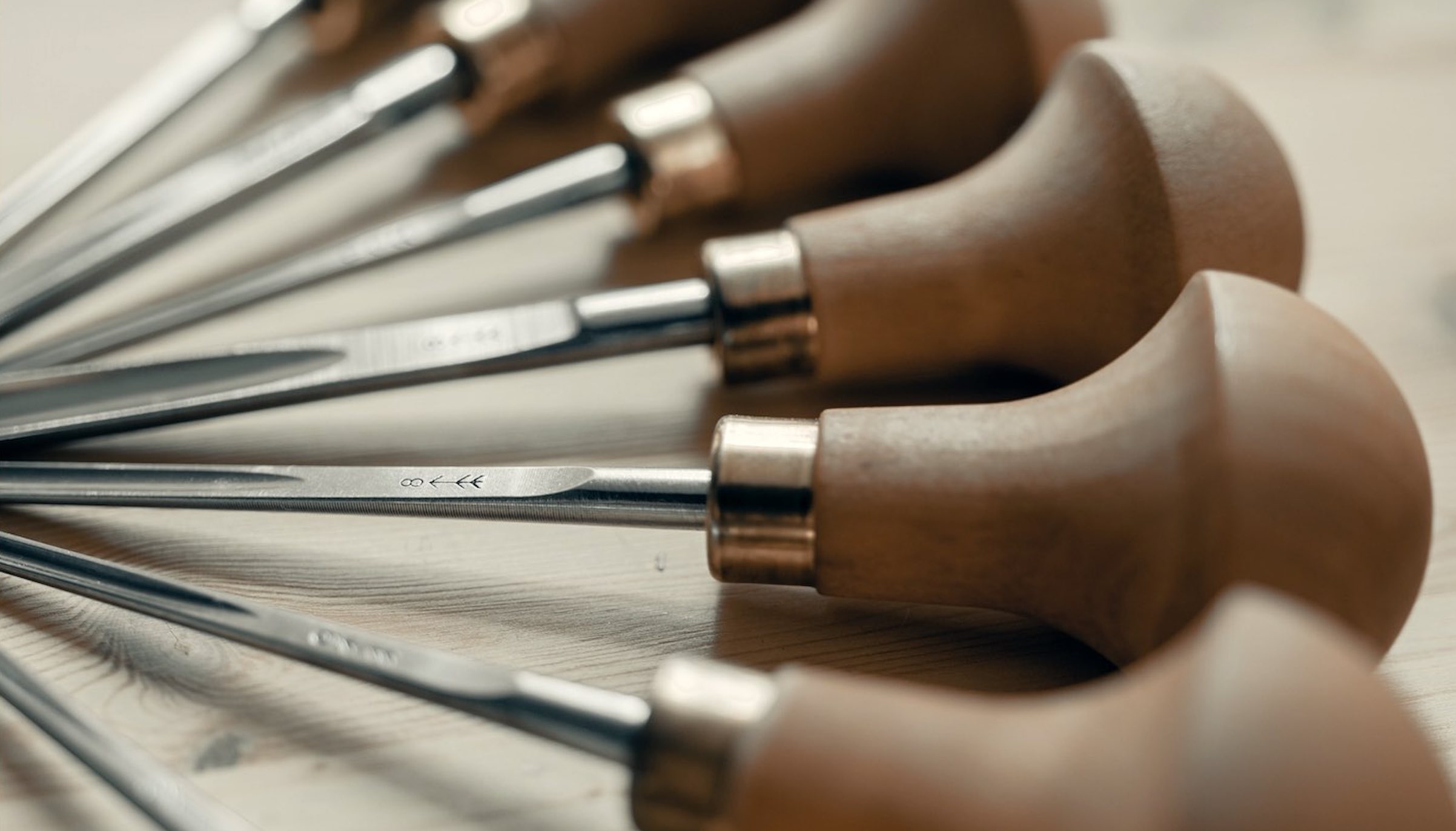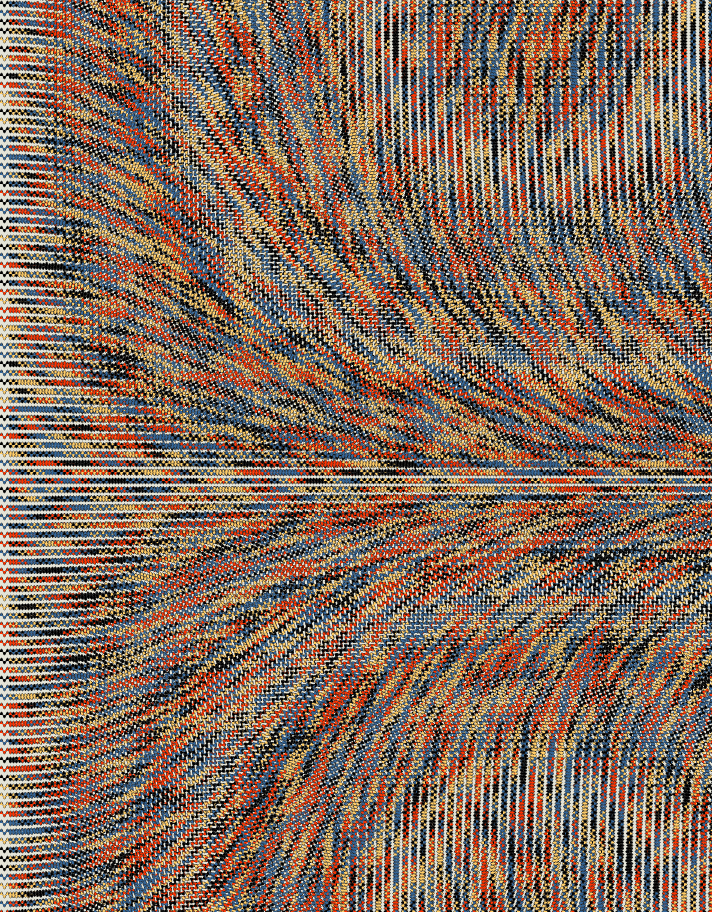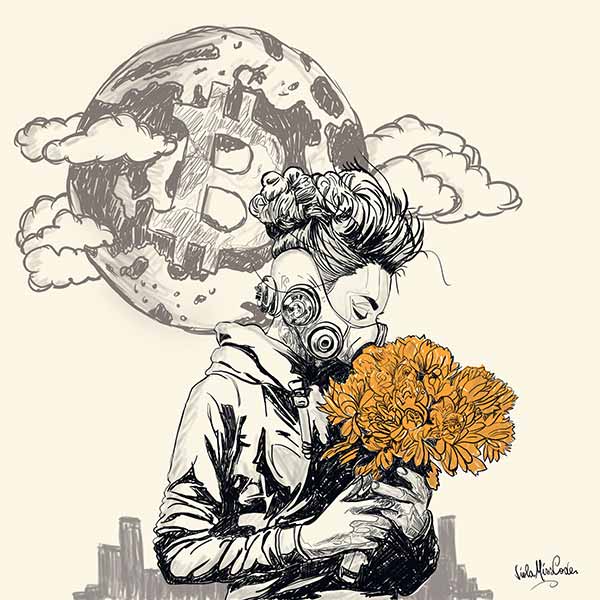Ever wondered how the Han Dynasty people in 206BC China mass reproduced their texts and images? Take a guess. Well, they would engrave a woodblock, then apply ink, appose silk, add pressure, and repeat.
That’s how it all started, with a woodblock and negative space. The technique was a revolution, bringing book and map making to a whole new era. In 15th century Germany, artists used printmaking to create playing cards, bold designs on blank backgrounds, and over time, more and more detailed artworks. Printmaking was an opening for societies to spread their word and for artists to share their art with larger audiences.
But how does printmaking work, what are the techniques, how did it evolve into the 21st Century?
Techniques in printmaking
Engraving and etching
Woodcutting uses a wooden board as the matrix, where the artist carves away from the wood to create negative space. When the board is inked, the carved parts don’t retain the ink, so only the parts that weren’t carved away will transfer onto paper or fabric. This negative space process is found in other printmaking methods such as metal engraving engraving and many more.
"Morning Walk 2" by Jay Caskie
With etching, after a protective layer is applied to the matrix (metal, stone, or glass) the artist draws with a needle or similarly sharp tool. The final drawing is covered with acid to attack the parts where the matrix was exposed by the tool, making them the only areas that will retain ink.
Limestone and light
My personal favorite form of printmaking is lithography, invented by accident in late 18th century Germany. First, the artist sands a slab of limestone to remove the previous drawing’s ghost-trace, then draws directly onto the slab using oil-based crayon or ink. This printmaking technique is based on the chemical principle of the repulsion of fat and water. During the printing process, the stone is constantly wet, so that the drawn parts, which are oily, refuse the water but accept the ink, itself oily, from the inking rollers. Once the drawing is complete, the stone is moved to the press on a cart (it’s very heavy) and placed on the press marble. The stone is treated with gum arabic and acid, then turpentine. At that point, the drawing is no longer visible: it’s in the stone. The drawing reappears when the stone is inked.
Very early on, for practical and economic reasons, lithographic stone was replaced first by grained zinc then by other metals such as aluminium. Later on, photolithography emerged. This method allows an image, printed on plastic film, to be transferred onto an aluminium plate using UV light and a chemical solution. The image could be a drawing but also a photograph or an offset print of a digital painting. The shadowed areas in the image result in an oily residue on the matrix plate, which then attracts the ink.
UV light as a way of transferring an image is also used in screen-printing, a process where ink is forced through a mesh screen onto a surface. By making specific areas of the screen impermeable to printing ink, a stencil is produced and acts as a barrier preventing ink from permeating those areas. The ink that successfully goes through the screen lands on the paper or fabric, forming the final image. The large-scale emigration of Chinese to the United States in the 19th century marked the entry of screen printing into the modern era and encouraged its emergence on the other side of the Atlantic. The craze was immediate, and the technique was modernized under the impetus of a high-performance American industry. The squeegee replaced the roller for ink application, and nylon soon made the silk screen obsolete.
"Can you hear me?" Trilogy by Studio Zum Heimathafen
4 color hand printed silkscreen prints
Colorful puzzles
With every traditional printmaking technique, the artist must draw, carve or design their art in reverse. Essentially, the image is mirrored: Anything to the right of the matrix will end up to the left of the print. This backward thinking applies to both image and text, so it isn’t rare to spot a reverse letter in a finished print — an easy mistake to make!
Now, what about multicolored prints? With most printmaking methods, the artist will need to prepare as many matrixes as desired colors. A four-color lithograph will require four stones to be drawn on, at the exact same scale. The same sheet of paper will be carefully aligned and run through the press repeatedly, once per color.
Linoprinting is one of the rare printmaking methods that allows artists to cut up their matrix easily, without any specific tools — a cutter or a pair of scissors will do. The matrix becomes a jigsaw, and each piece is inked separately. With practice and skill, linoprint artists can also apply ink such that it is a gradient, bringing all the more texture to their pieces and avoiding the need for several blocks. This is called the rainbow roll technique.
Lili Arnol Studios, Bird of Paradise
The reduction print method is also a fascinating and intricate technique used in printmaking, particularly with linoleum block prints. It involves using a single linoleum block to create a multicolored print by progressively carving away more material after each color is printed. It requires careful planning, precise execution, and challenges artists to think ahead and work systematically. The final prints exhibit a unique quality due to the layering of colors, and the process often leads to surprising and beautiful results. When a layer is carved away, it’s gone forever, resulting in limited series that can never be printed again.
While these printmaking techniques allow for multiple prints to be made from just one matrix, thinking these editions could be infinite would be wrong. The matrix will wear and tear, edges will become fuzzy, the matter will flatten, stop absorbing ink, ghost images will re-surface… eventually.
Printmaking on the blockchain
From Guttenberg’s printing press to the rise of NFTs, many advancements have impacted and transformed the way art is made and related to. The offset process, which is the main mass-printing process in the world, is a direct derivative of lithography. Images on metal plates are transferred (offset) to rubber blankets or large rollers, then onto the print media. While digital printing doesn’t imprint an image, and instead projects pigment onto paper to reproduce a given image, it wouldn’t exist if it weren’t for traditional printmaking techniques.
Lithography has become a very precious form of art. The stones are virtually no longer mined, and old slabs still in use have become rare or worn. For artists, being able to make a lithography is a privilege. Over time, in the face of technical challenges such as bringing a printing press into a third floor apartment, contemporary artists have, for the most part, have turned their attention to other techniques that can live in their homes.
Printmaking has always been a way for artists to share their work in an affordable way, offering enhanced discoverability for artists and accessible artwork for collectors. Each print is slightly unique, as there are variations in paper, ink, drying conditions, humidity, etc. Each piece is signed, numbered, and can’t be replaced by another. There’s just something special about owning a print from your favorite artists.
Prints, Gamma’s new feature, brings this concept to the blockchain and once again bridges the gap between an artist’s real world and the Bitcoin world. Just like real-life prints, Prints are a cost-effective way for artists to share their work and for collectors to support their favorite artists and discover new ones along the way. Gamma’s Prints are slightly unique: While the core, underlying visual is shared, each Print is inscribed on an individual satoshi, each with a traceable backstory, each created from a matrix. Prints will live on forever on the Bitcoin blockchain.
There will be no wear and tear.
Cover photo: Gouges by Clay Banks




